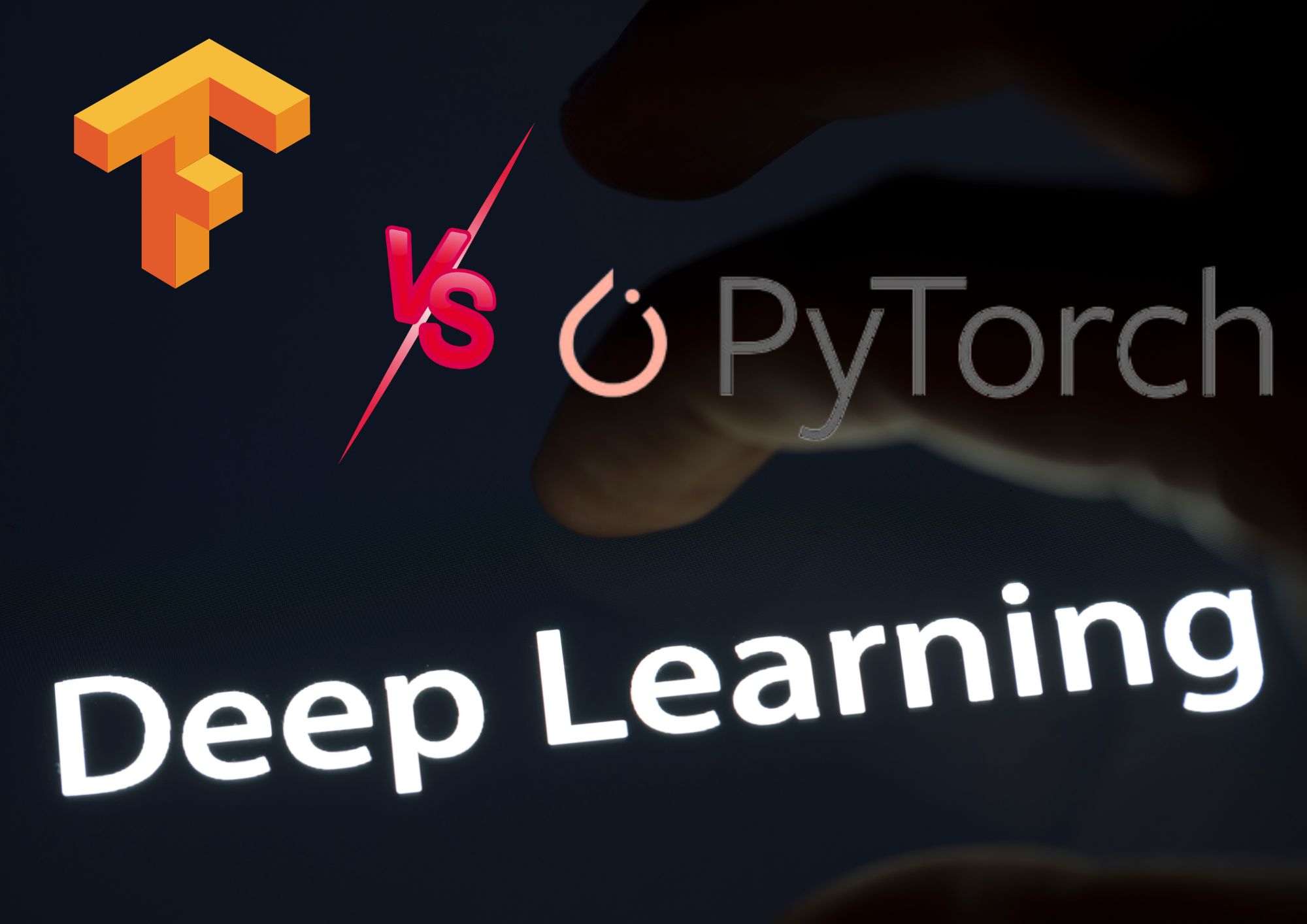eep learning has become a driving force behind advancements in artificial intelligence (AI).
With several deep learning frameworks and AI libraries available, choosing the right one can be overwhelming. In this article, we’ll provide a comprehensive comparison between two popular deep learning frameworks: TensorFlow and PyTorch.
We’ll delve into their features, performance, ease of use, and community support to help you make an informed decision.
 TensorFlow Overview:
TensorFlow Overview:
TensorFlow, developed by Google Brain, is an open-source software library designed for machine learning and deep learning applications.
Its flexibility and high-performance computation capabilities make it ideal for a range of tasks, from research to production.
Key Features of TensorFlow:
- Highly modular and versatile
- Excellent scalability
- Supports various platforms, including Android and iOS
- Rich ecosystem and community support
 TensorFlow Example:
TensorFlow Example:
Here’s a simple example of a neural network using TensorFlow:
import tensorflow as tf
# Load and prepare the dataset
mnist = tf.keras.datasets.mnist
(x_train, y_train), (x_test, y_test) = mnist.load_data()
x_train, x_test = x_train / 255.0, x_test / 255.0
# Create a simple model
model = tf.keras.models.Sequential([
tf.keras.layers.Flatten(input_shape=(28, 28)),
tf.keras.layers.Dense(128, activation='relu'),
tf.keras.layers.Dropout(0.2),
tf.keras.layers.Dense(10, activation='softmax')
])
# Compile the model
model.compile(optimizer='adam',
loss='sparse_categorical_crossentropy',
metrics=['accuracy'])
# Train and evaluate the model
model.fit(x_train, y_train, epochs=5)
model.evaluate(x_test, y_test)
 PyTorch Overview:
PyTorch Overview:
PyTorch, developed by Facebook’s AI Research lab, is an open-source machine learning library based on the Torch library. It’s known for its dynamic computational graph, making it more intuitive for building and debugging neural networks.
Key Features of PyTorch:
- Dynamic computational graph
- Strong support for GPU acceleration
- Excellent debugging capabilities
- Active and growing community
 PyTorch Example:
PyTorch Example:
Here’s a simple example of a neural network using PyTorch:
import torch
import torch.nn as nn
import torch.optim as optim
from torchvision import datasets, transforms
# Load and prepare the dataset
transform = transforms.Compose([transforms.ToTensor(), transforms.Normalize((0.1307,), (0.3081,))])
train_loader = torch.utils.data.DataLoader(datasets.MNIST('../data', train=True, download=True, transform=transform), batch_size=64, shuffle=True)
test_loader = torch.utils.data.DataLoader(datasets.MNIST('../data', train=False, transform=transform), batch_size=1000, shuffle=True)
# Create a simple model
class Net(nn.Module):
def __init__(self):
super(Net, self).__init__()
self.fc1 = nn.Linear(784, 128())
self.fc2 = nn.Linear(128, 10)
def forward(self, x):
x = x.view(-1, 784)
x = torch.relu(self.fc1(x))
x = self.fc2(x)
return x
# Initialize the model, loss function, and optimizer
model = Net()
criterion = nn.CrossEntropyLoss()
optimizer = optim.Adam(model.parameters(), lr=0.001)
# Train the model
for epoch in range(5):
for batch_idx, (data, target) in enumerate(train_loader):
optimizer.zero_grad()
output = model(data)
loss = criterion(output, target)
loss.backward()
optimizer.step()
# Evaluate the model
correct = 0
total = 0
with torch.no_grad():
for data, target in test_loader:
output = model(data)
_, predicted = torch.max(output.data, 1)
total += target.size(0)
correct += (predicted == target).sum().item()
print('Test Accuracy: %d %%' % (100 * correct / total)) Performance Comparison:
Performance Comparison:
TensorFlow and PyTorch both offer excellent performance, but they have some differences in terms of speed and memory consumption.
1. TensorFlow’s static computation graph can lead to faster execution and better optimization, especially for large-scale models.
2. PyTorch’s dynamic computation graph can slow down execution time but offers flexibility and better debugging capabilities.
 Ease of Use:
Ease of Use:
Both frameworks have their strengths and weaknesses in terms of usability:
1. TensorFlow’s static computation graph can make it difficult to debug and modify the model, but its recent integration of Keras has improved its ease of use.
2. PyTorch’s dynamic computation graph and “eager execution” make it more intuitive, allowing for easier debugging and model modification.
 Community Support:
Community Support:
Both TensorFlow and PyTorch have active communities and extensive documentation, making it easy to find support, tutorials, and pre-trained models.
1. TensorFlow has been around longer and has a larger community, but its growth has slowed down in recent years.
2. PyTorch has seen rapid growth in its community, with many researchers and developers preferring its dynamic nature and ease of use.
 Conclusion:
Conclusion:
Choosing between TensorFlow and PyTorch ultimately depends on your specific needs and preferences.
TensorFlow is often preferred for production environments and large-scale models, while PyTorch is favored by researchers and developers who prioritize ease of use and debugging capabilities.
Regardless of your choice, both deep learning frameworks offer powerful tools for creating AI-powered applications.
Remember to consider your project requirements, available resources, and personal preferences before committing to either TensorFlow or PyTorch.
Thank you for reading our blog, we hope you found the information provided helpful and informative. We invite you to follow and share this blog with your colleagues and friends if you found it useful.
Share your thoughts and ideas in the comments below. To get in touch with us, please send an email to dataspaceconsulting@gmail.com or contactus@dataspacein.com.
You can also visit our website – DataspaceAI

